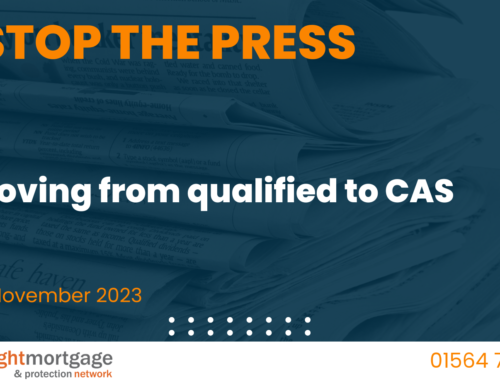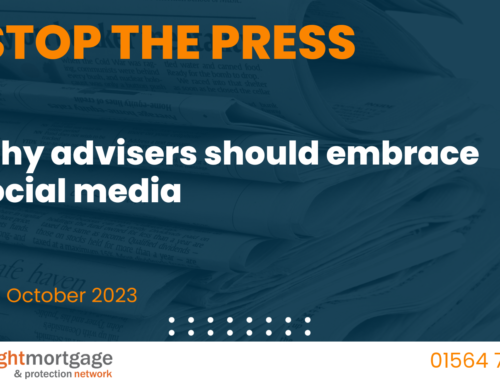Virgin Money Holdings (UK) plc announces strong financial performance supported by continued growth in high-quality lending
- Underlying profit before tax increased by 33 per cent to £213.3 million, from £160.7 million in 2015
- Customer loan balances increased by 19 per cent against continued strict underwriting principles
- Customer base increased by 15 per cent to 3.3 million at rate of over 35,000 customers per month, driven predominantly through digital channels
- Overall Net Promoter Score (NPS) improved to +29 from +19, making Virgin Money one of the leading UK retail banks for customer advocacy
Financial Highlights
- Underlying profit before tax increased by 33 per cent to £213.3 million, from £160.7 million in 2015.
- Underlying return on tangible equity increased to 12.4 per cent, from 10.9 per cent in 2015.
- Underlying cost:income ratio improved to 57.2 per cent, from 63.5 per cent in 2015.
- Statutory profit before tax increased to £194.4 million, compared to £138.0 million in 2015.
- Underlying basic earnings per share increased to 32.7 pence, compared to 26.8 pence in 2015.
- The Board recommends a final dividend of 3.5 pence per ordinary share. The total dividend for the year will be 5.1 pence per ordinary share, an increase of 13 per cent compared to 2015.
- Common Equity Tier 1 ratio of 15.2 per cent and a leverage ratio of 4.4 per cent as at 31 December 2016.
Jayne-Anne Gadhia, Chief Executive at Virgin Money, said:
“I am delighted to report another very successful year for Virgin Money in 2016. Our customer-focused strategy of growth, quality and returns continues to achieve and maintain outstanding customer approval ratings, excellent asset quality and strong financial performance. We recorded market-beating growth in our core mortgages, savings and credit card businesses to deliver a 33 per cent increase in underlying profit before tax to £213.3 million and strengthen our underlying return on tangible equity from 10.9 per cent to 12.4 per cent.
“We continue to target high quality lending growth and the combination of strong new mortgage lending and improved customer retention resulted in 17 per cent growth in mortgage balances to £29.7 billion, significantly outpacing the market. Our credit card business continues to flourish and 55 per cent growth in prime credit card balances to £2.4 billion means we remain well-placed to reach our target of £3 billion high-quality credit card balances at the end of 2017. The performance of our Essential Current Account was particularly strong and customer balances increased more than fivefold over the year. Our savings franchise continues to perform with 12 per cent growth in deposit balances to £28.1 billion and we are pleased with the increasing contribution and momentum in our Financial Services business.
“We increased our overall customer base by 15 per cent to 3.3 million, supported by growth in customer numbers across every product category. Our continued focus on delivering excellent customer service led to new highs in customer advocacy with our overall Net Promoter Score improving to +29, making us one of the best-rated retail banks in the UK.
“We are confident of sustaining strong asset growth and maintaining our excellent asset quality. We are excited about the strategic opportunities ahead of us including the build of our digital bank, which will be transformational for the business, and our partnership with Virgin Red, which will give our customers access to great deals from across the broader Virgin Group of companies. We will continue to put customers at the heart of everything we do and remain on track to sustain a solid double-digit return on equity in 2017.”
Delivered strong growth in customer balances
- Mortgage balances increased by 17 per cent to £29.7 billion.
- Gross mortgage lending grew by 12 per cent to £8.4 billion, a market share of 3.4 per cent.
- Net mortgage lending grew by 20 per cent to £4.3 billion, a market share of 11 per cent.
- Retail deposit balances increased by 12 per cent to £28.1 billion.
- Credit card balances increased to £2.4 billion, up 55 per cent, a 3.5 per cent market share.
Maintained our high-quality balance sheet, underpinned by robust asset quality
- Strong capital position, with a Common Equity Tier 1 ratio of 15.2 per cent at 31 December 2016.
- Total capital ratio of 20.4 per cent and a leverage ratio of 4.4 per cent at 31 December 2016.
- Low overall cost of risk at 0.13 per cent reflects our excellent credit quality, driven by our conservative risk appetite and prudent underwriting.
- Mortgage arrears remained at low levels, with loans over three months in arrears of 0.15 per cent compared with the latest industry average of 1.00 per cent.
- Credit cards cost of risk improved to 1.70 per cent in 2016, from 2.00 per cent in 2015, reflecting the continued high quality of the book.
Continued to pursue our ambition of making ‘everyone better off’
- Customers: total customer numbers increased to 3.3 million and overall NPS improved to +29 from +19 in 2015.
- Communities: helped charities raise £92 million in 2016 through Virgin Money Giving, Virgin Money’s not-for-profit online donation service. The Virgin Money Foundation has now distributed grants worth almost £2 million in the North East of England since August 2015.
- Corporate partners: awarded the prestigious ‘Best Lender Award’ at the Legal & General Mortgage Club Awards for the second year running.
- Colleagues: maintained strong colleague engagement with an overall engagement score of 81 per cent, which benchmarks strongly against UK high performing companies.
Outlook
- Our strategy of growth, quality and returns is clear and unchanged. We will continue to target 3 to 3.5 per cent of high-quality gross mortgage lending, ahead of our market share of stock. We will maintain the application of strict underwriting standards to protect asset quality as we progress towards our target of £3 billion credit card balances by the end of 2017. As a result of the strength of the business, our operating leverage and our continued ability to manage our cost base, we remain well-placed to maintain a solid double-digit return on tangible equity (RoTE), somewhat ahead of the 12.4 per cent RoTE achieved in 2016.
- As a UK retail bank focused on serving domestic customers, the decision to exit the EU does not directly impact on our business. Whilst the UK economy proved resilient during the second half of the year, the eventual timing and nature of the UK’s exit from the EU remains unclear and the longer-term impact on the economy is uncertain.
- We are sufficiently nimble to adjust to changes in the operating environment and will continue to target high-quality growth opportunities in value accretive market segments.
- Following the successful build of our credit card business, enhancing Virgin Money’s digital capability is now a key focus having entered into a strategic partnership with 10x Future Technologies to build a scalable, integrated digital banking platform. Over 82 per cent of total sales were carried out digitally in 2016 and the enhancement of our online and mobile distribution will help us continue to serve our customers’ emerging needs.
- Despite the current prolonged period of low interest rates we achieved a net interest margin (NIM) of 160 basis points in 2016. Although asset spreads will continue to put pressure on NIM, we expect to continue offsetting this pressure through strong income growth, a cost:income ratio of 50 per cent exiting 2017, impairments of up to 20 basis points and drawing from the Term Funding Scheme. We expect our NIM for 2017 to be up to 160 basis points.
- We are pleased with the increasing momentum in our Financial Services business and together with fee income from our lending products, other income should generate around 10 per cent of our total income.
- Our philosophy regarding acquisitions is unchanged. We will consider potential opportunities that are a good fit with the business, value accretive and within our prudent risk appetite.
Consolidated Income Statement
| 2016 £ million | 2015 £ million1 | Change % | |
|---|---|---|---|
| Net interest income | 519.0 | 456.1 | 14 |
| Other income | 67.9 | 67.4 | 1 |
| Total income | 586.9 | 523.5 | 12 |
| Costs | (336.0) | (332.5) | 1 |
| Impairment | (37.6) | (30.3) | 24 |
| Underlying profit before tax | 213.3 | 160.7 | 33 |
1 On an underlying basis, 2015 other income has been restated to remove the impact of fair value gains and losses on financial instruments in line with 2016 treatment.
Consolidated Balance Sheet
| At 31 Dec 2016 £ million | At 31 Dec 2015 £ million | Change % | |
|---|---|---|---|
| Assets | |||
| Cash and balances at central banks | 786.3 | 888.6 | (12) |
| Loans and receivables | 33,003.4 | 27,724.6 | 19 |
| Available-for-sale financial assets | 858.8 | 1,296.9 | (34) |
| Other | 407.1 | 318.9 | 28 |
| Total assets | 35,055.6 | 30,229.0 | 16 |
| Liabilities and equity | |||
| Deposits from banks | 2,132.5 | 1,298.7 | 64 |
| Customer deposits | 28,106.3 | 25,144.9 | 12 |
| Debt securities in issue | 2,600.0 | 2,039.4 | 28 |
| Other | 537.8 | 397.3 | 35 |
| Provisions | 8.5 | 8.4 | 1 |
| Total liabilities | 33,385.1 | 28,888.7 | 16 |
| Total equity | 1,670.5 | 1,340.3 | 25 |
| Total liabilities and equity | 35,055.6 | 30,229.0 | 16 |
Key Ratios
| 2016 | 2015 | Change | |
|---|---|---|---|
| Net interest margin (%) | 1.60 | 1.65 | (5)bps |
| Underlying cost:income ratio (%) | 57.2 | 63.5 | (6.3)pp |
| Cost of risk1 (%) | 0.13 | 0.12 | 1bp |
| Statutory basic earnings per share (p) | 29.4 | 22.9 | 28% |
| Tangible net asset value per share (£) | 2.73 | 2.54 | 19p |
| Common Equity Tier 1 ratio (%) | 15.2 | 17.5 | (2.3)pp |
| Leverage ratio (%) | 4.4 | 4.0 | 0.4pp |
| Return on tangible equity (%) | 12.4 | 10.9 | 1.5pp |
1 Defined as impairment charges net of debt recoveries divided by average gross balances for the period. Key ratios are presented on an underlying basis except where stated.
Reconciliation to Statutory Profit
| 2016 £ million | 2015 £ million | Change % | |
|---|---|---|---|
| Underlying profit before tax | 213.3 | 160.7 | 33 |
| IPO share payments | (2.0) | (10.5) | |
| Strategic items | (2.4) | (8.1) | |
| Simplification costs | (5.6) | (3.7) | |
| Fair value losses on financial instruments | (8.9) | (0.4) | |
| Statutory profit before tax | 194.4 | 138.0 | 41 |
The Group uses a number of Alternative Performance Measures (APMs), in addition to underlying profit, in the analysis and discussion of its financial performance and financial position. APMs do not have standardised definitions and may not be directly comparable to measures defined within IFRS. A full list of APMs used by the Group, including their bases of calculation, are set out on page 267 of the 2016 Annual Report and Accounts.





